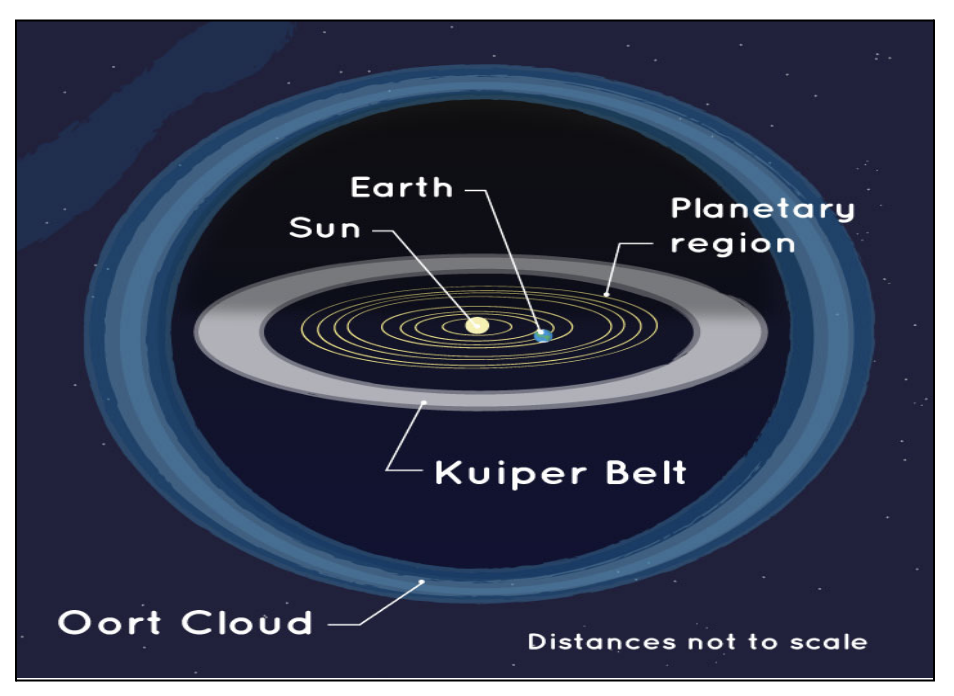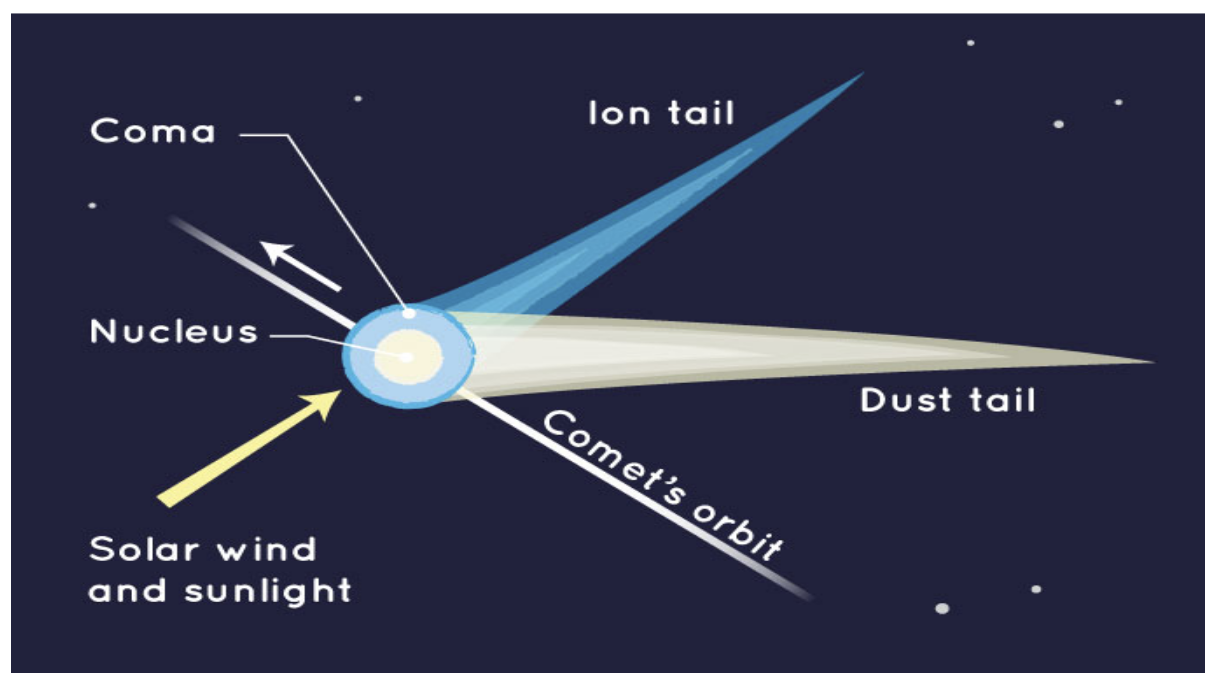News Excerpt:
The Eta Aquariid meteor shower, which has been active since April 15, will peak on May 5 and 6, 2024.
Key Points:
- Comprising burning space debris moving at speeds of around 66 km per second (2.37 lakh kmph) into Earth’s atmosphere, these showers are seen in May every year, and are best visible to countries such as Indonesia and Australia in the Southern Hemisphere.
- Meteor showers come from comets, which are frozen leftovers from the formation of our solar system, some 4.6 billion years ago.
What are comets?
- Comets are composed of dust, rock, and ice, and orbit around the Sun in highly elliptical orbits which can, in some cases, take hundreds of thousands of years to complete.
- According to NASA, a total of 3,910 comets are currently known, although billions more are theorized to be orbiting the Sun beyond Neptune, in the Kuiper Belt and even more distant Oort cloud.

- Comets come in different sizes, although most are roughly 10 km wide.
- However, as they come closer to the Sun, comets “heat up and spew gases and dust into a glowing head that can be larger than a planet”, according to NASA’s website.
- This material also forms a tail that stretches millions of miles.

How exactly are meteor showers related to comets?
- Meteors are simply grains of dust or rock that burn up as they enter the Earth’s atmosphere. This burning also creates a brief tail.
- Since most meteors are tiny (the size of a grain of sand) they completely burn up in Earth’s atmosphere.
- However, once in a while, a large enough meteor passes through and hits the ground (at which time it is called a meteorite), often causing significant damage.
- A meteor shower can be observed when Earth passes through the clouds of dust left behind in a comet’s orbital plane. The sky lights up with small and large meteor tails as the debris left behind by the comet interacts with Earth’s atmosphere.
|
WHAT IS A METEOR?
|
About Eta Aquariid meteor shower:
- The Eta Aquariid meteor shower is formed when earth passes through the orbital plane of the famous Halley’s Comet, which takes about 76 years to orbit the Sun once.
- While it was observed as early as 240 BCE, it was only in 1705 that astronomer Edmond Halley realised that the periodic appearances were re-appearances of the same comet.
- Last seen in 1986, Halley’s comet is due to enter the inner solar system again in 2061.
- Like Eta Aquariids, the Orionids meteor shower is also caused by the Halley’s Comet, and appears every October.
Why are Eta Aquariids unique?
- The Eta Aquariid meteor shower is known for its rapid speed. This makes for long, glowing tails which can last up to several minutes.
- According to NASA, about 30 to 40 Eta Aquarid meteors can be seen per hour during the peak of the meteor shower, if observed from the Southern Hemisphere.
- The number decreases to about 10 meteors per hour if being viewed in the Northern Hemisphere.
- This is due to the location of the “radiant” — the position in the sky where the meteor shower seems to come from.
- In the Northern Hemisphere, Eta Aquarid meteors most often appear as ‘Earthgrazers’ — long meteors which appear to skim the surface of the Earth.
- In the South, however, they can be seen higher up in the sky, and hence are more visible.
